2014 ChaLearn Looking at People Workshop ECCV
Organizers

Sergio Escalera
Computer Vision Center (UAB) and University of Barcelona, Spain
sergio.escalera.guerrero@gmail.com
Sergio Escalera is Full Professor at the Department of Mathematics and Informatics, Universitat de Barcelona, where he is the head of the Informatics degree. He is ICREA Academia. He leads the Human Pose Recovery and Behavior Analysis Group. He is Distinguished Professor at Aalborg University. He is vice-president of ChaLearn Challenges in Machine Learning, leading ChaLearn Looking at People events. He is also Fellow of the ELLIS European Laboratory for Learning and Intelligent Systems working within the Human-centric Machine Learning program. He participated in several international funded projects and received an Amazon Research Award. He has published more than 300 research papers and received a CVPR best paper award nominee and a CVPR outstanding reviewer award.
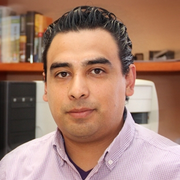
Hugo Jair Escalante
INAOE, México
hugojair@inaoep.mx
Hugo Jair Escalante is researcher scientist at Instituto Nacional de Astrofisica, Optica y Electronica, INAOE, Mexico. Previously, he was assistant professor at the Graduate Program on Systems Engineering at UANL. He holds a PhD in Computer Science, for which he received the best PhD thesis on Artificial Intelligence 2010 award (Mexican Society in Artificial Intelligence). He was granted the best paper award of the International Joint Conference on Neural Networks 2010 (IJCNN2010). He is secretary and member of the board of directors of ChaLearn, The Challenges in Machine Learning Organization, a non-profit organism dedicated to organizing challenges, since 2011. Also, he is member of the board of the CONACYT Network on Applied Computational Intelligence, regular member of AMEXCOMP and member of the National System of Researchers (SNI). Since 2017, he is editor of the Springer Series on Challenges in Machine Learning, a new book series focused on academic competitions within machine learning and related fields. He has been involved in the organization of several challenges in computer vision and machine learning, collocated with top venues in machine learning and computer vision, see http://chalearnlap.cvc.uab.es/. He has served as co-editor of special issues in IJCV, IEEE TPAMI, and IEEE Transactions on Affective Computing. He has served as area chair for NIPS 2016 and NIPS 2017, and has been member of the program committee of venues like CVPR, ICPR, ICCV, ECCV, ICML, NIPS, IJCNN. His research interests are on machine learning, evolutionary computing and its applications on language and vision.

Xavier Baró
Universitat Oberta de Catalunya, Barcelona, Catalonia
xbaro@uoc.edu
Xavier Baró received his B.S. degree in Computer Science at the Universitat Autònoma de Barcelona (UAB) in 2003. In 2005 he obtained his M.S. degree in Computer Science at UAB, and in 2009 the Ph.D degree in Computer Engineering. At the present he is a lecturer and researcher at the IT, Multimedia and Telecommunications department at Universitat Oberta de Catalunya (UOC). He is involved on the teaching activities of the Computer Science, Telecommunication and Multimedia degrees of the UOC, and collaborates as assistant professor on the teaching activities of the Computer Science degree at the Applied Mathematics and Analysis of the Universitat de Barcelona (UB). In addition, he is involved on the Interuniversity master on Artificial Intelligence (UPCUBURV). He is cofounder of the Scene Understanding and Artificial Intelligence (SUNAI) group of the UOC, and collaborates with the Computer Vision Center of the UAB, as member of the Human Pose Recovery and Behavior Analysis (HUPBA) group. His research interests are related to machine learning, evolutionary computation, and statistical pattern recognition, specially their applications to generic object recognition over huge cardinality image databases.

Jordi Gonzàlez
Computer Vision Center and Universitat Autònoma de Barcelona, Barcelona, Spain
jordi.gonzalez@uab.cat
Dr. Jordi Gonzàlez received the Ph.D. degree in Computer Engineering in 2004 from Universitat Autònoma de Barcelona (UAB), Catalonia. He was a postdoctoral fellow at the Institut de Robòtica i Informàtica Industrial (IRI), a Joint Research Center of the Technical University of Catalonia (UPC) and the Spanish Council for Scientific Research (CSIC). At present, he is Associate Professor in Computer Science at the Computer Science Department, UAB. He is also a research fellow at the Computer Vision Center, where he has co-founded 2 spin-offs and the Image Sequence Evaluation (ISE Lab) research group in 2004. His research interests lie on pattern recognition and machine learning techniques for the computational interpretation of human behaviours in image sequences, or Video Hermeneutics. He has co-organized the THEMIS (BMVC2008 and ICCV2009), ARTEMIS (ACM MM2010, ECCV2012 and ACM MM2013) and ChaLearn LAP (ICMI2013, ECCV2014 and CVPR2015) workshops related to the video-based analys is of human motion in surveillance, films and social media footage. He has served as Area Chair (ICPR2012 and ICIAP2015); Publicity Chair at AVSS2012; Workshop Chair (ICCV2011 and AVSS2015); Local Arrangement Chair at ICCV2011; and Tutorial Chair at ibPRIA2011. He has co-organized Special Issues in IJPRAI (2009), CVIU (2012), MVA (2013) and TPAMI (2015) journals. He is member of the Editorial Board of CVIU and IET-CVI journals. He is also member of IEEE, Spanish Association on Pattern Recognition (AERFAI) and Catalan Association for Artificial Intelligence (ACIA).
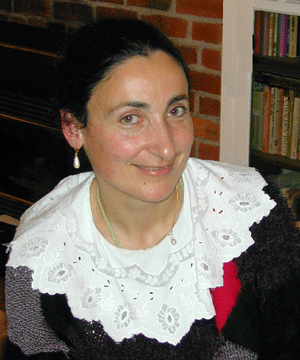
Isabelle Guyon
University Paris-Saclay, France and ChaLearn USA
isabelle@clopinet.com
Isabelle Guyon ( http://guyon.chalearn.org/ ) is chaired professor in “big data” at the Université ParisSaclay, specialized in statistical data analysis, pattern recognition and machine learning. She is one of the cofounders of the ChaLearn Looking at People (LAP) challenge series and she pioneered applications of the MIcrosoft Kinect to gesture recognition. Her areas of expertise include computer vision and and bioinformatics. Prior to joining ParisSaclay she worked as an independent consultant and was a researcher at AT&T Bell Laboratories, where she pioneered applications of neural networks to pen computer interfaces (with collaborators including Yann LeCun and Yoshua Bengio) and coinvented with Bernhard Boser and Vladimir Vapnik Support Vector Machines (SVM), which became a textbook machine learning method. She worked on early applications of Convolutional Neural Networks (CNN) to handwriting recognition in the 1990’s. She is also the primary inventor of SVMRFE, a variable selection technique based on SVM. The SVMRFE paper has thousands of citations and is often used as a reference method against which new feature selection methods are benchmarked. She also authored a seminal paper on feature selection that received thousands of citations. She organized many challenges in Machine Learning since 2003 supported by the EU network Pascal2, NSF, and DARPA, with prizes sponsored by Microsoft, Google, Facebook, Amazon, Disney Research, and Texas Instrument. Isabelle Guyon holds a Ph.D. degree in Physical Sciences of the University Pierre and Marie Curie, Paris, France. She is president of Chalearn, a nonprofit dedicated to organizing challenges, vicepresident of the Unipen foundation, adjunct professor at NewYork University, action editor of the Journal of Machine Learning Research, editor of the Challenges in Machine Learning book series of Microtome, and program chair of the upcoming NIPS 2016 conference.
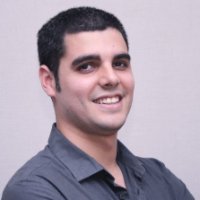
Miguel Reyes Estany
Computer Vision Center (UAB) and University of Barcelona, Barcelona, Spain
mreyes@physicaltech.com
Miguel Reyes received his Bachelor degree in Computer Science at Universitat Autònoma de Barcelona (UAB) in 2010, and his master degree in Artificial Intelligence in Universitat Politècnica de Catalunya (UPC) in 2011. In October 2011 he joined to the University of Barcelona (UB), where he is assistant professor in the Computer Science area and in the master of artificial intelligence in the field of computer vision. He is currently Math PhD student, within applied mathematics and analysis department (MAIA). His research interests are focused in pattern recognition, visual object recognition, multi-modal computer vision for pose recovery, probabilistic and dynamic programming approaches for behavior analysis, and interested in clinical applications transferring. Currently linked to the Barcelona Perceptual Learning, associated to Consolider Ingenio, MIPRCV: Multimodal Interaction in Pattern Recognition and Computer Vision PR-CVC 2012, and Computer Vision Center (UAB) member in HUPBA group.
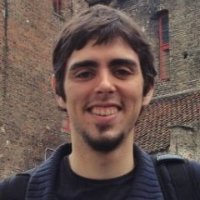
Pau Rodríguez López
Universitat Autònoma de Barcelona, Barcelona, Spain
pau.rodriguez@uab.cat

Jamie Shotton
Microsoft Research Cambridge, United Kingdom
jamiesho@microsoft.com
Jamie Shotton leads the Machine Intelligence & Perception group at Microsoft Research Cambridge. He studied Computer Science at the University of Cambridge, where he remained for his PhD in computer vision and machine learning for visual object recognition. He joined Microsoft Research in 2008 where he is now a Principal Researcher. His research focuses at the intersection of computer vision, AI, machine learning, and graphics, with particular emphasis on systems that allow people to interact naturally with computers. He has received multiple Best Paper and Best Demo awards at top academic conferences. His work on machine learning for body part recognition for Kinect was awarded the Royal Academy of Engineering’s gold medal MacRobert Award 2011, and he shares Microsoft’s Outstanding Technical Achievement Award for 2012 with the Kinect engineering team. In 2014 he received the PAMI Young Researcher Award, and in 2015 the MIT Technology Review Innovator Under 35 Award (“TR35”).
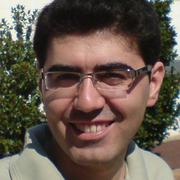
Meysam Madadi
Universitat de Barcelona and Computer Vision Center, Spain
meysam.madadi@gmail.com
Meysam Madadi received his Bachelor degree in Software Engineering at BuAli Sina university of Hamedan and M.S. degree in Computer Vision and Artificial Intelligence at Universitat Autònoma de Barcelona (UAB) in 2007 and 2013, respectively. He has started his research activities by focusing on information retrieval and data mining since his bachelor project, continuing in master specifically on computer vision and image processing. He gave a special attention to pose recovery and human behavior analysis from his master thesis in title of Extraction of body soft-biometry from 3D videos using Kinect. He is interested in generating and developing new algorithms in these topics applying the knowledge in computer vision and retrieval systems besides machine learning, algorithms design in artificial intelligence, statistics, and linear algebra, among others.
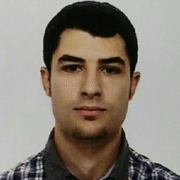
Víctor Ponce
Universitat de Barcelona and Computer Vision Center, Spain
vponcelop@gmail.com
Víctor Ponce Received his B.S. degree in Computer Science in 2010, and his M.S. degree in Artificial Intelligence in 2012. I’m a Ph.D. candidate at the the Dept. of Mathematics and Computer Science, University of Barcelona. I’m member of the Computer Vision Center, in the group Human Pose Recovery and Behavior Analysis (HuPBA). His main interests of research are the fields of computer vision, machine learning, and evolutionary computation applied to human behavior analysis.

Miguel Ángel Bautista
University of Barcelona and Computer Vision Center, Spain
mbautista@ub.edu
I was born in the beautiful island of Ibiza, Spain. I earned my Ph. D in Error-Correcting Representations for Multi-class problems at University of Barcelona. My main research interest lay in the intersection of Computer Vision and Machine Learning, I am particularly interested in high-level problems (object recognition, pose estimation, action recognition, etc.). I received my B. Sc. and M. Sc. degrees in Computer Science and Artificial Intelligence from Universitat de Barcelona and Universitat Politécnica de Catalunya in January and June 2010, respectively. In 2010 I received the first prize from the Catalan Association of Artificial Intelligence Thesis Awards. In 2013 I was a visitor at Carnegie Mellon University (advised by Dr. Fernando de la Torre), funded by the AGAUR-BE grant. Currently, I am a Postdoctoral Fellow with the Heidelberg Collaboratory for Image Processing working on deep unsupervised methods for similaritiy learning.
News
There are no news registered in